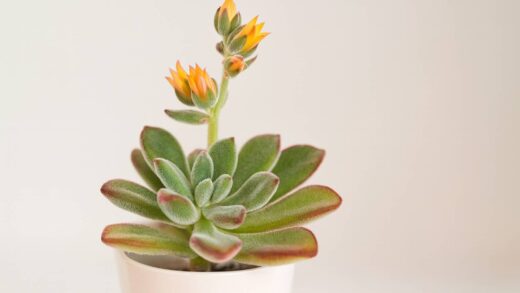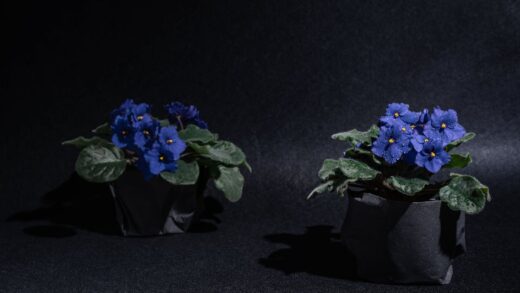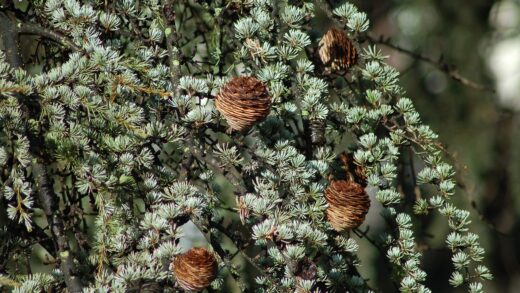Virginia creeper is widely appreciated for its self-sufficiency and ability to thrive with minimal intervention, a trait that extends to its nutritional needs. It is not a demanding plant and generally performs well in average garden soils without a rigorous fertilization regimen. However, understanding its basic nutrient requirements and knowing when and how to provide supplemental feeding can enhance its growth, vigor, and the intensity of its celebrated autumn color. Excessive or improper fertilization can be counterproductive, so a balanced and informed approach is essential for achieving the best results with this dynamic vine.
Understanding the vine’s basic nutritional needs
Like all plants, Virginia creeper requires a range of essential nutrients for healthy growth, which are categorized as macronutrients and micronutrients. The primary macronutrients are nitrogen (N), phosphorus (P), and potassium (K). Nitrogen is crucial for vegetative growth, promoting the development of lush, green leaves and stems. Phosphorus plays a vital role in root development, flowering, and energy transfer within the plant. Potassium is essential for overall plant health, improving disease resistance, water regulation, and the strength of cell walls.
While these three are required in the largest quantities, the plant also needs secondary macronutrients like calcium, magnesium, and sulfur, as well as a host of micronutrients such as iron, manganese, and zinc. In most typical garden soils, these nutrients are already present in sufficient quantities to support the robust growth of Virginia creeper. The vine has an efficient root system that is adept at extracting the necessary elements from the earth, which is a primary reason it is considered such a low-maintenance plant.
A key aspect of this vine’s nutritional profile is its preference for a balanced diet. An excess of any single nutrient, particularly nitrogen, can disrupt this balance and lead to problems. High-nitrogen fertilizers, for example, will stimulate rapid, weak, and leggy foliage growth. This not only creates a plant that requires more frequent pruning but also one that is more susceptible to pests like aphids and diseases like powdery mildew. Furthermore, excessive nitrogen can inhibit the production of the pigments responsible for the brilliant red fall color, resulting in a disappointing autumn display.
Therefore, the goal of any fertilization strategy should be to supplement the soil’s natural fertility only when necessary, rather than to force unnaturally rapid growth. A healthy, moderately growing vine with strong stems and vibrant color is far more desirable than an overgrown, weak specimen. Observing the plant’s performance is the best way to gauge its nutritional status. If it is growing steadily and its leaves have good color, it is likely getting everything it needs from the existing soil.
More articles on this topic
The role of soil health in nutrient uptake
The foundation of plant nutrition is not just the presence of nutrients, but the overall health of the soil. A healthy, living soil with good structure and a thriving population of microorganisms is essential for making nutrients available to the plant’s roots. Simply adding fertilizer to poor soil is often an inefficient and ineffective approach. The first step in ensuring good nutrition for Virginia creeper should always be to cultivate healthy soil.
Organic matter is the cornerstone of soil health. Incorporating materials like compost, leaf mold, or well-rotted manure into the soil before planting does wonders for its structure and fertility. Organic matter improves drainage in heavy clay soils and increases water-holding capacity in sandy soils. It also provides a slow, steady release of a wide spectrum of nutrients as it is broken down by soil microbes, feeding the plant in a natural and balanced way that synthetic fertilizers cannot replicate.
Soil pH, which is a measure of its acidity or alkalinity, also plays a critical role in nutrient availability. Virginia creeper is adaptable and can tolerate a wide pH range, but it generally prefers a slightly acidic to neutral soil (pH 6.0 to 7.5). In soils that are either too acidic or too alkaline, certain essential nutrients can become “locked up” and unavailable for the plant to absorb, even if they are present in the soil. A simple soil test can determine the pH and indicate if any amendments, such as lime to raise pH or sulfur to lower it, are necessary.
Maintaining a healthy soil ecosystem is an ongoing process. Applying a one- to two-inch layer of organic mulch, such as wood chips or shredded leaves, around the base of the vine each year is highly beneficial. As this mulch decomposes, it continually adds organic matter to the soil, suppresses weeds that compete for nutrients, and helps to maintain a more consistent soil moisture level. This simple practice nurtures the soil food web, which in turn feeds the plant.
More articles on this topic
Fertilization strategies for new and young plants
During its first one or two years, a young Virginia creeper is focused on establishing a strong and extensive root system. Providing a supportive nutritional environment during this period can help it get off to a vigorous start. The best way to do this is by enriching the soil at the time of planting. As previously mentioned, mixing a generous amount of compost or other organic matter into the backfill soil provides an ideal foundation. This initial soil amendment often supplies all the nutrients a young plant needs for its first full season.
If the soil is known to be particularly poor or sandy, a light application of a balanced, slow-release granular fertilizer can be beneficial in the first spring after planting. A balanced fertilizer is one with a relatively even N-P-K ratio, such as 10-10-10. This ensures that the plant receives an equal supply of the three primary macronutrients, promoting well-rounded development of roots, stems, and leaves. Always follow the application rates recommended on the product packaging, as over-fertilizing can burn the tender roots of a young plant.
The timing of fertilizer application is important. It should be applied in the spring as new growth begins to emerge. This is when the plant’s metabolic activity is increasing, and it can make the most effective use of the available nutrients. Avoid fertilizing late in the summer or in the autumn, as this can stimulate new, tender growth that may not have time to harden off before the first frost, making it susceptible to winter damage.
For young plants, organic methods of feeding are often superior to synthetic ones. Top-dressing the soil around the base of the plant with a layer of compost each spring is an excellent alternative to granular fertilizers. Compost releases nutrients slowly, improves soil health, and carries very little risk of over-fertilizing or burning the plant. This gentle approach supports steady, healthy growth, which is exactly what a young vine needs to establish itself successfully.
Feeding mature Virginia creeper vines
Once a Virginia creeper vine is well-established, typically after two to three years, its need for supplemental fertilization decreases dramatically. Its extensive root system is now capable of foraging for nutrients over a large area, and the plant is generally very self-sufficient. In most cases, a mature Virginia creeper growing in reasonably good soil will require no fertilizer at all to thrive and will still produce vigorous growth and spectacular autumn color.
The primary feeding strategy for a mature vine should be to continue nurturing the soil. An annual application of organic mulch or a top-dressing of compost is usually all that is needed to replenish the soil’s nutrient content and maintain its healthy structure. This mimics the natural process of decomposition that occurs in the plant’s native woodland habitat, providing a sustainable and balanced source of nutrition. This simple annual task is the key to long-term, low-maintenance care.
Supplemental fertilization for a mature vine should only be considered if the plant is showing clear signs of a nutrient deficiency. These signs might include unusually slow growth, small leaves, or widespread yellowing of the foliage (chlorosis) that is not attributable to disease or improper watering. If such symptoms appear, a soil test is the most accurate way to diagnose the specific deficiency. Based on the results, a targeted fertilizer can be applied to correct the imbalance.
If a general boost is deemed necessary without a soil test, it is always best to err on the side of caution. Use a balanced, slow-release fertilizer at half the recommended strength in the spring. This provides a gentle nutritional supplement without the risk of encouraging the kind of excessive, weak growth that can lead to other problems. For mature vines, the mantra should always be “less is more” when it comes to fertilization.


















